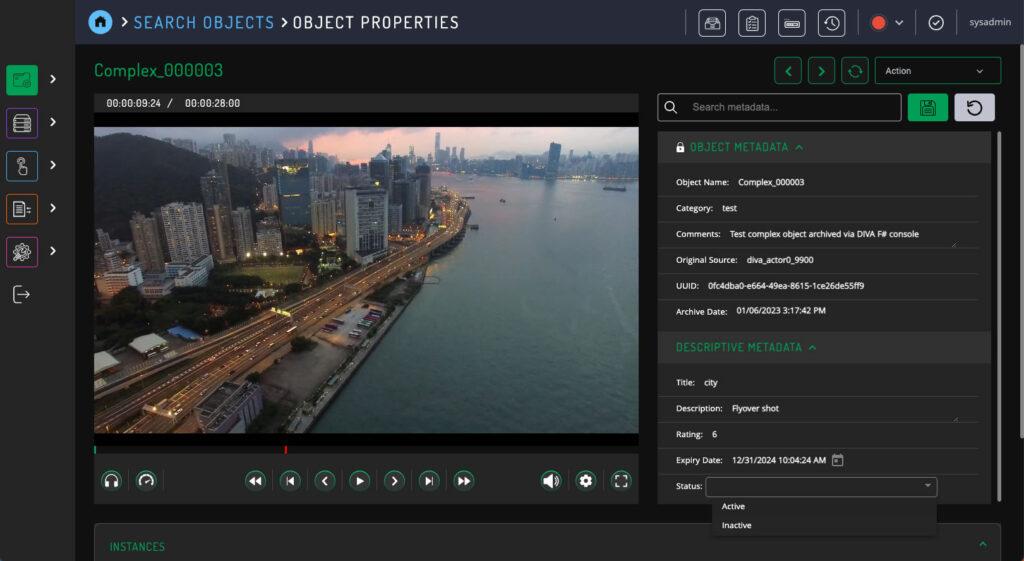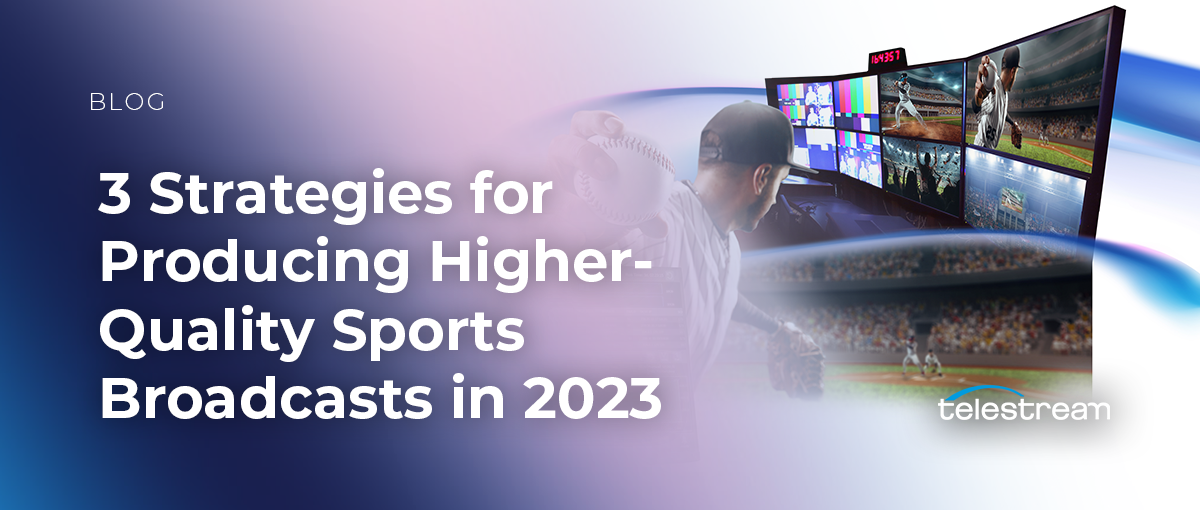By: Greg Doggett
The demand for producing higher-quality sports broadcasts has grown substantially. Broadcasters need a timely and cost-effective way to do this and are adopting a range of strategies to that end. In this blog post, we will discuss three key strategies that can help live sports broadcasters with delivering, monetizing, and producing higher-quality sports broadcasts.
Strategy 1: Producing Higher-Quality Sports Broadcasts with Best-In-Class Content
One of the most tried-and-true methods for increasing production value is providing viewers with different perspectives of the game, adding excitement and making it more engaging for fans. This involves sending video feeds to a live editing pipeline for quick turnaround, before delivering resolutions scaled for TV screens, social media, or in-stadium LED boards. Media can come from local or network-connected devices, or from storage libraries and systems which could be physical hard drives, tapes, cloud servers, or more likely a combination thereof.
More media feeds bring more headaches for production. Cobbling together a sports broadcast that draws from multiple cameras, audio devices, and storage systems can become very complicated very quickly. Having a multi-channel live capture and media ingest solution is crucial for collecting live feeds and file-based media. Especially as viewers expect higher-quality content, this live capture solution will need to be flexible enough to ingest media from different camera sources, supporting a wide range of formats such as NDI, SRT, and RTMP to name a few. A solution like this will enable broadcasters to continue producing higher-quality sports broadcasts without worrying about aging technology.
The beating heart of any live sports broadcast is a sync pulse generator, or SPG. They ensure all the media coming into a production workflow are reliably in sync with each other. They also provide test signals and clocks to ensure consistent timing throughout the show. All this makes post production and live editing much easier and quicker. If your broadcast is going to be professional-caliber quality, having a sync generator solution that can accommodate IP, SDI, and Analog sources will be tremendously valuable.
Strategy 2: Automating Post Production Workflows to Deliver Content More Quickly
Automated post production workflows deliver timely content more easily during a live broadcast. By optimizing all areas from media processing to asset management, even quality control, these workflows can also reduce costs in a sports broadcast operation. These automation solutions can free up resources to focus on more important things such as editorial tasks or creating highlight reels.
While individual solutions can prepare an asset, workflow automation and orchestration solutions can make these critical steps much easier to accomplish. Intelligent and modern platforms build workflows through easy-to-use UIs, streamlining many common tasks from camera card ingest to editorial outputs. This enables the production of higher-quality sports broadcasts on quicker timelines – whether it’s for social media, TV, or the jumbotron.

Centralized content management solutions, deployed in the cloud, on-prem, or a hybrid approach, can easily streamline media discovery, metadata tagging, searchability, and retrieval for post-production teams. These solutions also enable partially or wholly remote teams to collaborate when implemented correctly. This lets production and post production teams operate much more smoothly and cost-effectively.
Read how the MLB Network safely digitizes, catalogs, archives, and protects its baseball content with Telestream, growing its programming schedule to 16 live hours per day.
Before broadcasting, content needs to pass certain quality control checks to make sure it is being displayed correctly. Many industry-leading and award-winning waveform monitoring devices support the QC of high-resolution media effectively and efficiently. Some are purpose-built for post-production teams, such as the PRISM MPP series, and others are designed for live broadcast productions. It’s important to evaluate these solutions and make sure the device matches up with your use case so you can extract the most value. This includes factors like whether it supports hybrid SDI/IP production environments or how it handles 8K/HDR media.
Strategy 3: Leveraging Modern Cloud-Based & AI Tools for Producing Higher-Quality Sports Broadcasts
Widespread use of the cloud has helped broadcasters reduce costs and scale production capabilities as needed. Production teams that make cloud-native solutions a critical factor in their strategies can expect a range of benefits, including flexibility, scalability, and cost-effectiveness. Cloud services specifically can help in the areas of quality control, media inspection, and encoding. These areas are often high intensity, such as correcting 8K files, and high impact, such as packaging and protecting assets upon passing QC checks.
Other new tools, such as artificial intelligence and machine learning, can be used to automate repetitive tasks and improve data analysis. Developers are building tools leveraging artificial intelligence (AI) and machine learning (ML) that streamline many critical sports broadcast production components. AI-powered video analytics software can analyze viewer data, provide broadcasters with valuable insights into their audience, and empower informed, revenue-generating content strategies. Some platforms supplement automated production workflows with AI-powered tools, real-time monitoring and analytics, and audience interactivity and engagement features. This creates an all-in-one solution for producing higher-quality sports broadcasts and delivering engaging fan experiences.
One area sports broadcast production teams should look to streamline is the creation of closed captions. Many services allow for quick speech-to-text caption creation, and more comprehensive solutions will enable the easy correction, formatting, and conversion of the final CC file before automatically attaching it to the content.
Conclusion:
To sum up, live sports broadcasting is an exciting and dynamic industry that demands high-quality content delivered to a large-scale audience in a timely and cost-effective manner. By adopting some of the strategies discussed here, leveraging cutting-edge tools and technologies, sports broadcasters and production teams can improve the methods in which they are delivering and producing higher-quality sports broadcasts, creating memorable experiences for their viewers. For more information about Telestream’s solutions for live sports production and post production, visit www.telestream.net.



